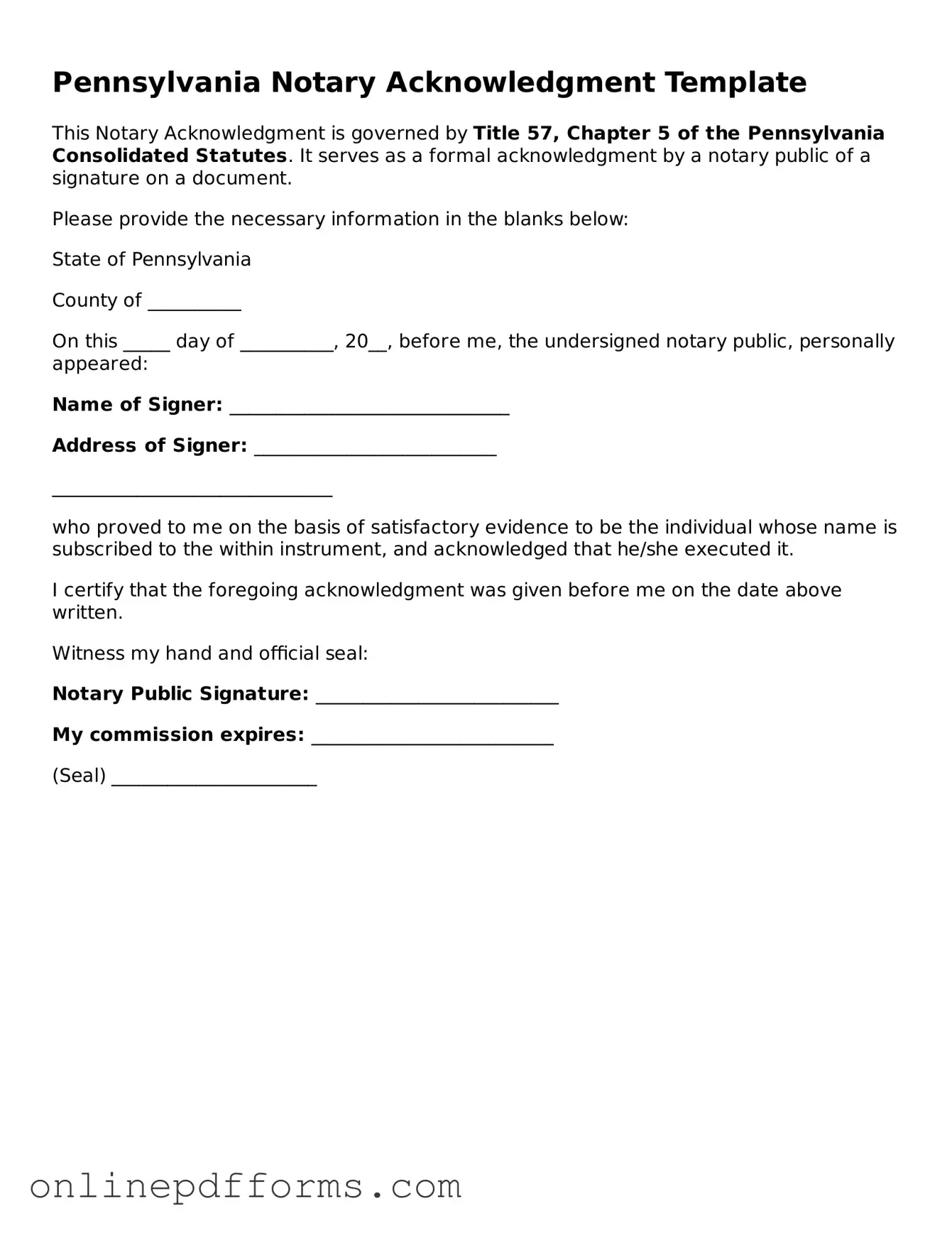Blank Pennsylvania Notary Acknowledgement Form
The Pennsylvania Notary Acknowledgement form is a legal document used to verify the identity of a signer and confirm their willingness to sign a document. This form plays a crucial role in ensuring the authenticity of various legal transactions. Understanding how to properly fill out this form is essential for anyone involved in notarized agreements.
Ready to complete your Pennsylvania Notary Acknowledgement form? Click the button below to get started!
Open Notary Acknowledgement Editor Now
